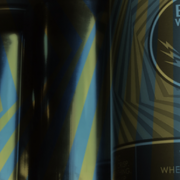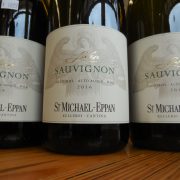I often hear people refer to the wine they are drinking as “Pinot” – but since “Pinot” comes in red, rosé and white, not to mention sparkling, one should disambiguate! Is it the blanc, the gris or the noir? What does “blanc de noir” mean? And what is the difference by the way between “gris” and “grigio”?
Today, we will explore all of these questions
The word “Pinot” is thought to refer to the shape of the grape bunches on the vine because they resemble pine cones. They have relatively small berries which are tightly packed together in a characteristic shape. And, given all the names attached to the word “Pinot,” one might be forgiven for thinking that they refer to a family of grapes. In fact, all the pinots share a genetic fingerprint. Or in other words, they are all clones or mutations of one variety. The gris and blanc are just lighter skinned versions of the noir. Much of this is because the pinot grapes have been around for centuries; some think they have been around for 2,000 years with specific references dating back to the 4th century A.D. It has had a lot of time to create a highly branched family tree.
The expressions of the various wines span a spectrum of colors, styles and flavors. Pinot Noir is the red wine made anywhere from a light, fruity easy drinking style full of bright cherry and strawberry notes to a more muscular, grippy style full of forest floor and earthy, meaty aromas. Most interestingly, it can me made into white sparkling wines, called “blanc de noir.” This literally means “white from black” and is made by very gently pressing the grapes to ensure that color from the skins does not leech into the wine, which is then fermented as a white wine.
Pinot Blanc wines tend to be made with white grapes into a white wine (obviously) but they are often made in a relatively full-bodied style with moderately aromatic characteristics of stone-fruit, almonds and grapefruit. It is most widely planted and highly regarded in Alsace, France, Germany, Italy, and Austria. Unfortunately, in most other regions of the world, it is woefully underappreciated and does not receive the attention it deserves!
That is not the case with Pinot Gris or Grigio, which has seen a huge rise in popularity of late. So, what is the difference between the two? It is pure style, baby. Pinot Gris is the French / Alsatian name which also denotes a rounder, softer, fuller-bodied, more scented style. Pinot Grigio is the Italian name and also the Italian style. A bit harder-edged, a bit sharper with higher acid and crisper finish. Both can have beautiful noses with stone fruit and grapefruit with a hint of orange blossom. Interestingly, different places in the new world have adapted both the names and styles to some extent. In Oregon for example, the viticultural area rules prohibit calling it “grigio” and one might expect a more Alsatian character to the wines. New Zealand also hues to the “gris” name and style. But Washington and California tend to call it “grigio.” Go figure.
Which brings us to this week’s wine: The Thirsty Owl 2016 Pinot Gris from the Finger Lakes region of New York. I know some people are skeptical about wine from New York, but this wine will put those doubts to rest. It is a lovely summer wine that will pair with everything from fresh mozzarella and brie to bratwurst. The first sign that it is a fuller bodied, softer style of wine is the tall, elegant fluted bottle. The second sign is, of course, the name. The third sign is a memory of a balmy, sunny summer in 2016 that allowed the grapes to ripen fully and allowed the creation of a lovely wine full of peach, pear and tropical citrus notes and a light floral quality indicating the relatively cool nights in upstate NY. Despite only having 12.2% alcohol, it has a creamy, silky texture that slides across your tongue like a cool caress. And the finish leaves you wondering if you should take the next sip right away or savor the previous one a little longer.
Thanks for reading, Seema











